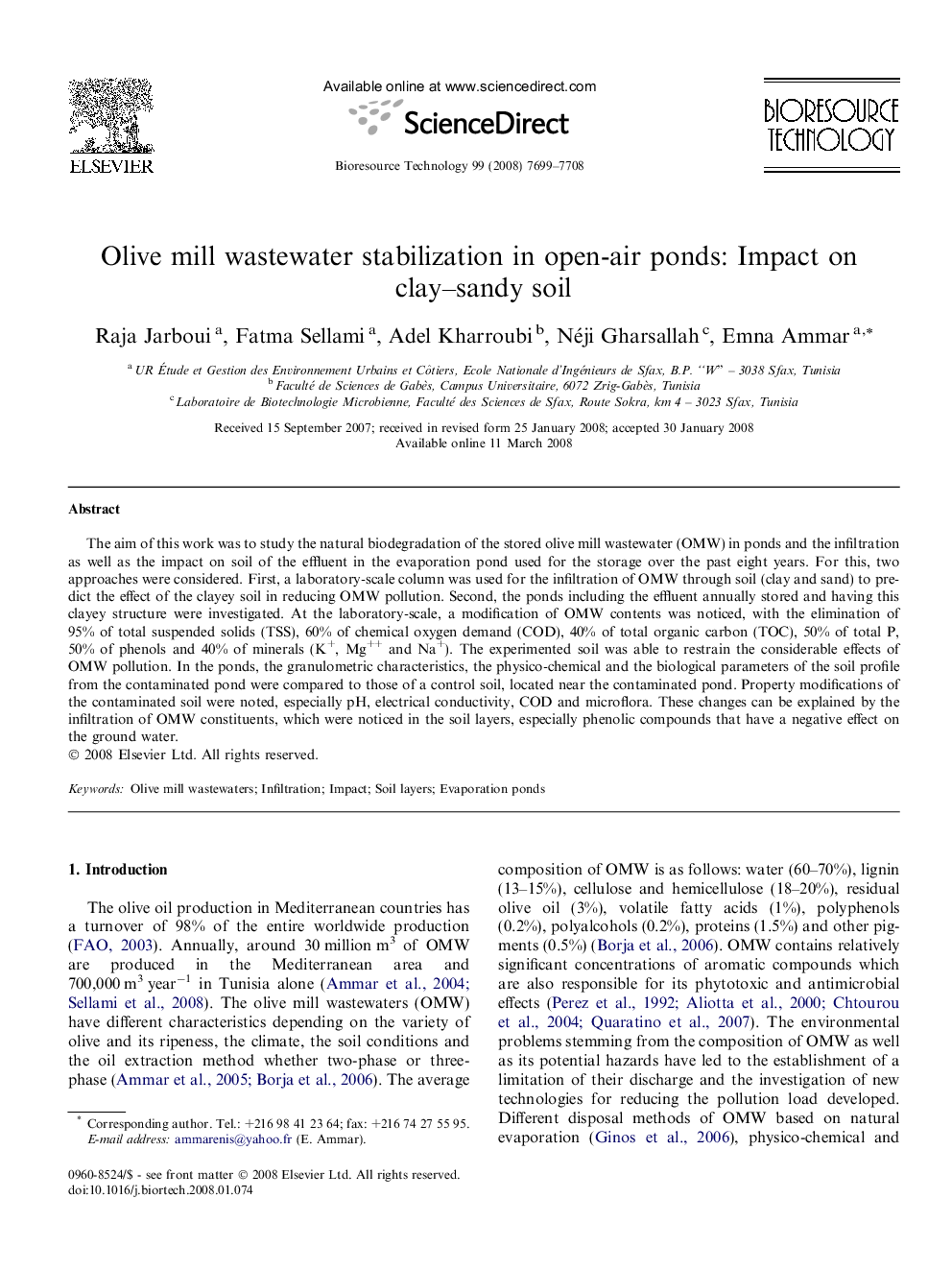| Article ID | Journal | Published Year | Pages | File Type |
|---|---|---|---|---|
| 685046 | Bioresource Technology | 2008 | 10 Pages |
The aim of this work was to study the natural biodegradation of the stored olive mill wastewater (OMW) in ponds and the infiltration as well as the impact on soil of the effluent in the evaporation pond used for the storage over the past eight years. For this, two approaches were considered. First, a laboratory-scale column was used for the infiltration of OMW through soil (clay and sand) to predict the effect of the clayey soil in reducing OMW pollution. Second, the ponds including the effluent annually stored and having this clayey structure were investigated. At the laboratory-scale, a modification of OMW contents was noticed, with the elimination of 95% of total suspended solids (TSS), 60% of chemical oxygen demand (COD), 40% of total organic carbon (TOC), 50% of total P, 50% of phenols and 40% of minerals (K+, Mg++ and Na+). The experimented soil was able to restrain the considerable effects of OMW pollution. In the ponds, the granulometric characteristics, the physico-chemical and the biological parameters of the soil profile from the contaminated pond were compared to those of a control soil, located near the contaminated pond. Property modifications of the contaminated soil were noted, especially pH, electrical conductivity, COD and microflora. These changes can be explained by the infiltration of OMW constituents, which were noticed in the soil layers, especially phenolic compounds that have a negative effect on the ground water.
